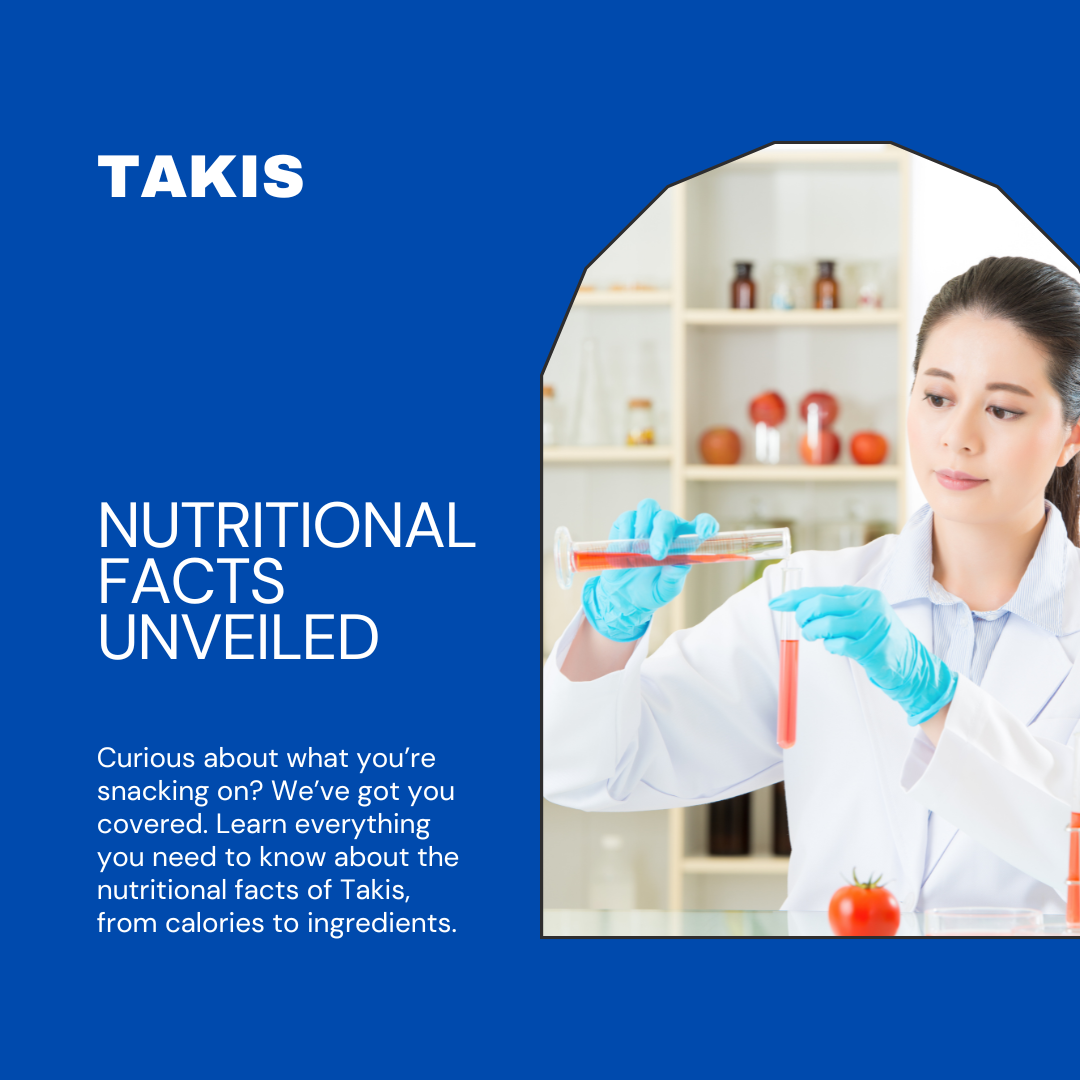
In the world of snacks, Takis hold a coveted spot. With their distinctive rolled-up tortilla shape and the signature ‘extreme’ flavors, Takis are a favorite among those who seek a punch of spice in their munchies. However, with their increasing popularity, questions about their nutritional content and health implications are inevitable. Whether you’re a Takis aficionado, a nutrition researcher, or simply health-conscious, understanding the nutritional elements of this snack can guide smarter food choices.
Nutritional Breakdown of Takis
When it comes to nutrition, there’s more to a Taki than just the heat. Below, we dive into the core nutritional components of this fiery snack.
Calories
A serving of Takis typically ranges from 140 to 150 calories per 1 ounce (28g). For some context, the average adult needs about 2,000 to 2,500 calories a day.
Fat
Takis packs a significant fat content, with one serving providing 8 to 9 grams. This consists of both saturated and unsaturated fats, the latter being considered the ‘good’ fats. For a balanced diet, the American Heart Association recommends limiting saturated fats to about 13 grams per day, keeping in mind the importance of the overall fat content in a diet.
Sodium
Takis are well-known for their salty kick, and this is no surprise when you look at the nutrition label. A typical serving can contain up to 240 milligrams of sodium, but what’s more concerning is the additional sodium from the high flavoring content, which can contribute to excessive daily sodium intake. The American Heart Association suggests a maximum 2,300 milligrams of sodium per day, with an ideal target of 1,500 milligrams.
Carbohydrates
Most of the calories in Takis come from carbohydrates. Each serving carries around 16 to 17 grams, with a small amount of dietary fiber. While you should aim to get about half your calories from wholesome, healthy carbohydrates like fruits, vegetables, and whole grains, Takis’ carb content is on the higher end of the spectrum for a single-ounce snack.
Protein
With 2 grams of protein per serving, Takis are not a significant source of this vital nutrient. However, in combination with the other food groups, snacking on Takis occasionally contributes to your daily protein intake.
Ingredients Analysis
What’s Inside That Taki?
Corn Masa Flour
The primary ingredient, corn masa flour, is a staple of traditional Mexican cuisine. It provides the base for the crispy texture of Takis and also adds to the carbohydrate content. Masa itself is fairly nutritious, being a good source of fiber, B vitamins, and some minerals.
Vegetable Oil
This is where a significant portion of the fat content comes from. Takis use vegetable oils which, depending on the type, can vary in their health impact. Oils high in monounsaturated or polyunsaturated fats are considered healthier options than those that are richer in saturated or trans fats.
Artificial Flavors
The intense flavors of Takis largely come from the use of artificial flavors. While these don’t contribute to the calorie or macronutrient content, they do add to the list of ingredients that don’t offer nutritional benefits.
Health Impact
Considering the nutritional breakdown and key ingredients, what kind of impact can Takis have on your health?
Weight Management
Consuming Takis in moderation as part of a well-balanced diet is unlikely to lead to weight gain. However, the calorie and fat content, if not accounted for, can contribute to exceeding daily energy needs, which may lead to weight issues over time.
Cardiovascular Health
The fat and sodium content in Takis raises red flags for cardiovascular health. Excessive consumption of foods high in saturated fats can increase the levels of ‘bad’ cholesterol in the blood, a major risk factor for heart disease. Additionally, high sodium intake is linked to hypertension and cardiovascular complications.
Sodium Intake
One of the biggest concerns with Takis is their sodium content. Individuals who are salt-sensitive, have high blood pressure, or are at risk for heart conditions should be particularly cautious about their intake. Regular monitoring of your sodium consumption, both from Takis and other sources, is crucial for maintaining good health.
Additives and Artificial Colors
While the FDA has approved the use of the additives and colors in Takis, some individuals may have sensitivities to these compounds. It’s important to be aware of any personal sensitivities and choose snacks accordingly.
Consumer Awareness and Choices
How can you make informed decisions about snacking on Takis or not?
Informed Snacking
Balancing your diet is about more than just the individual foods; it’s also about portion sizes and the frequency of indulgences. Be mindful of the quantity you consume and consider it in the context of your overall diet for the day.
Healthier Alternatives
For those committed to a healthier lifestyle, there are plenty of snacking options that offer both flavor and nutrition. Choices like air-popped popcorn, whole grain crackers, or veggie sticks paired with a dip can satisfy the craving for a crunchy snack without the excess calories or sodium.
Conclusion
Snacking on Takis occasionally can be part of a healthy lifestyle, but it’s vital to balance these choices with the other foods you eat throughout the day. Be aware of the nutritional profile and serving sizes of the snacks you consume, and always consider the long-term health implications. Remember, understanding the nutritional facts of what you eat is a significant step toward making decisions that support your well-being.
Remember, while enjoying a bag of Takis now and then won’t spell disaster for most, moderation is key. For those who are more health-conscious or have specific dietary restrictions, there are always alternative snacks available. In the end, the best choices are those that consider your health goals and overall nutritional needs.
